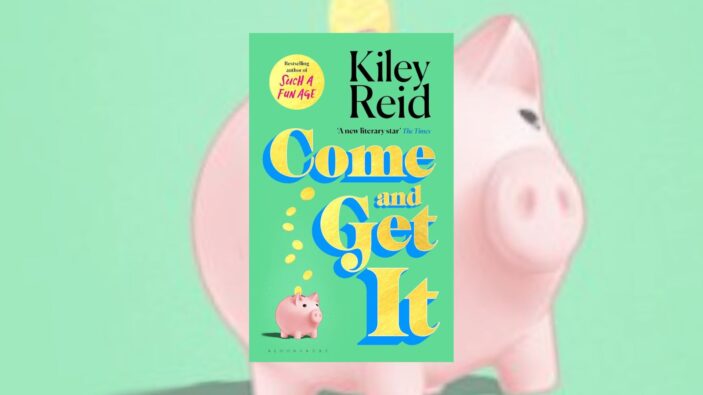
Come and Get It is the highly anticipated follow up novel from Kiley Reid, whose debut Such a Fun Age was a smash hit upon its release in 2019.
Like her first novel, Reid’s sophomore foray into fiction looks at issues of race and class in contemporary America; this time through the eyes of three characters at the University of Arkansas in 2017. The first, Agatha, is a 38 year old visiting professor and successful writer of philosophical self-help books in the vein of writers like Brené Brown. After the breakdown of her marriage to Robin, a dancer, Agatha accepts a position interstate and throws herself into a new project, tentatively on young people’s attitudes to weddings. But, while interviewing three students in residential housing, she uncovers a more fascinating research subject as she listens to each of her interviewees talk about money.
The second main character is Millie, a 24 year old resident assistant who is majoring in hospitality. Millie is one of the only Black students in her dorm, and feels frustrated by the relative privilege of the students she is looking after, all while, Millie has to hustle to save up the down payment for a home of her own.
The third point of view character, Kennedy, is one of these residents living in a suite with two other students. The suite happens to be right next to Millie’s own room. Kennedy is lonely and anxious, having left her previous school after a tragedy that is hinted at throughout the book. She soothes herself with shopping, and with reading Agatha’s books.
Like Such a Fun Age, Come and Get It uses humour and a light tone to have a serious conversation about race and privilege in America. It is populated with characters who showcase the full spectrum of human ridiculousness. The students have preppy American teen names, like Tyler (a girl), Peyton and Kennedy. One of mean girl Tyler’s offsiders, Casey, talks with a thick Southern accent and her dialogue is written out phonetically. Through the wall of the dorm room, Millie hears the girls primping and preparing for nights out, or talking behind one another’s backs.
It is things overheard through the wall which ramp up the tensions between Millie and her charges, first as she hears their casual nastiness (Tyler and her friends often refer to Millie using loaded racial terms that they don’t even seem to understand the history of, and often do it in front of Peyton, who is also Black), and then as the girls overhear information and both sides begin to use it to their advantage.
It is this opportunity for listening in which Millie is able to offer Agatha, an older woman whom she feels drawn to for reasons she cannot fully articulate. And as Agatha uses the students and their stories to write a series of articles on millennials and money (often combining details from different people or flat out inventing details to make her stories more interesting for Teen Vogue), so too does she begin a relationship with Millie, calling her ethics as both a teacher and a writer into question.
The final chapters of the book have the momentum of a snowball racing down a hill, and the fallout, when everything finally collides, is catastrophic on all sides. And yet, after closing the pages of the book, the reader may find themselves wondering about the larger importance of what they have read. While Reid’s first novel used humour as a way to gently critique the ways that even the most ‘conscientious’ allies still can never fully understand the experiences of others, her second feels somewhat more hollow. Perhaps because the characters themselves are more juvenile, the stakes feel lower in Come and Get It.
Several of the revelations of the novel – such as what it was that sent Kennedy to Arkansas – fall flat for being foreshadowed for so long. Indeed Kennedy herself feels a little incongruous. Her back story, which perhaps is the most interesting thing about her, is not revealed soon enough to build sympathy in the reader, and for most of the book she comes across as spoiled and mollycoddled, too timid to make friends with her room mates. Why anyone would want to be friends with Tyler and Peyton is a different matter entirely. And while Tyler is passable as the villain of the piece, Regina George she is not. She is manipulative and prone to tantrums but never quite nasty enough to really earn your ire.
The novel may fall somewhat short of Such a Fun Age, as second novels often do, but that doesn’t mean that it’s not a compelling read. Kiley Reid writes with a clear understanding of how young women talk and act and of the issues that they face at this time in their lives.
Pick this one up if you like novels which refuse to fit into any one genre, or if you’re looking for something that feels like it would make a good Netflix limited series.





THREE STARS (OUT OF FIVE)
Kiley Reid’s Come and Get It is available now from Bloomsbury. Grab yourself a copy from Booktopia HERE.
